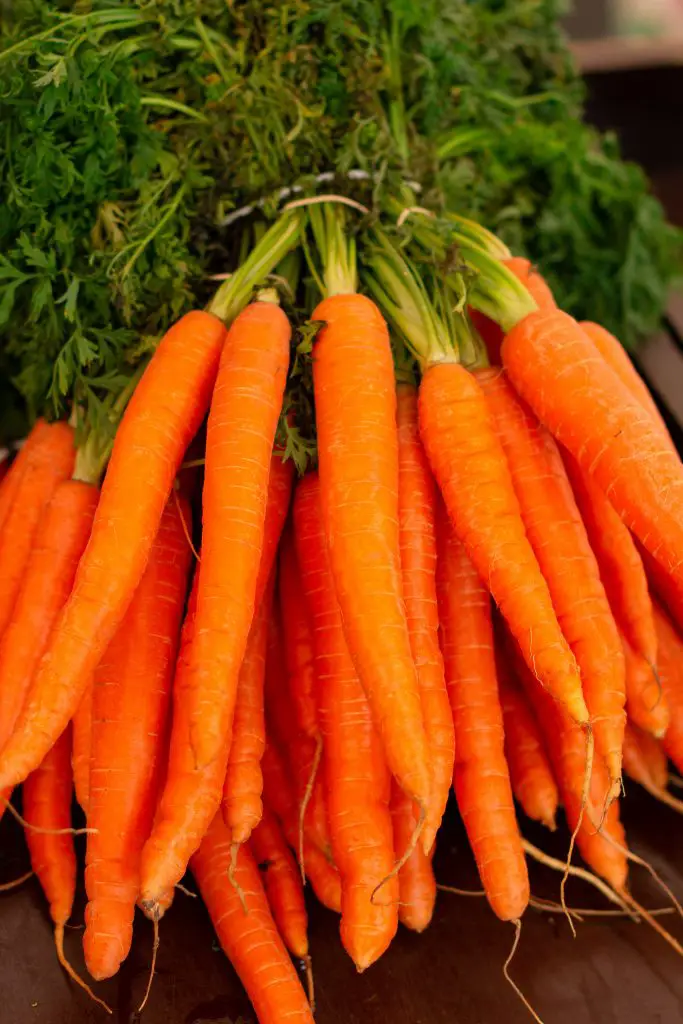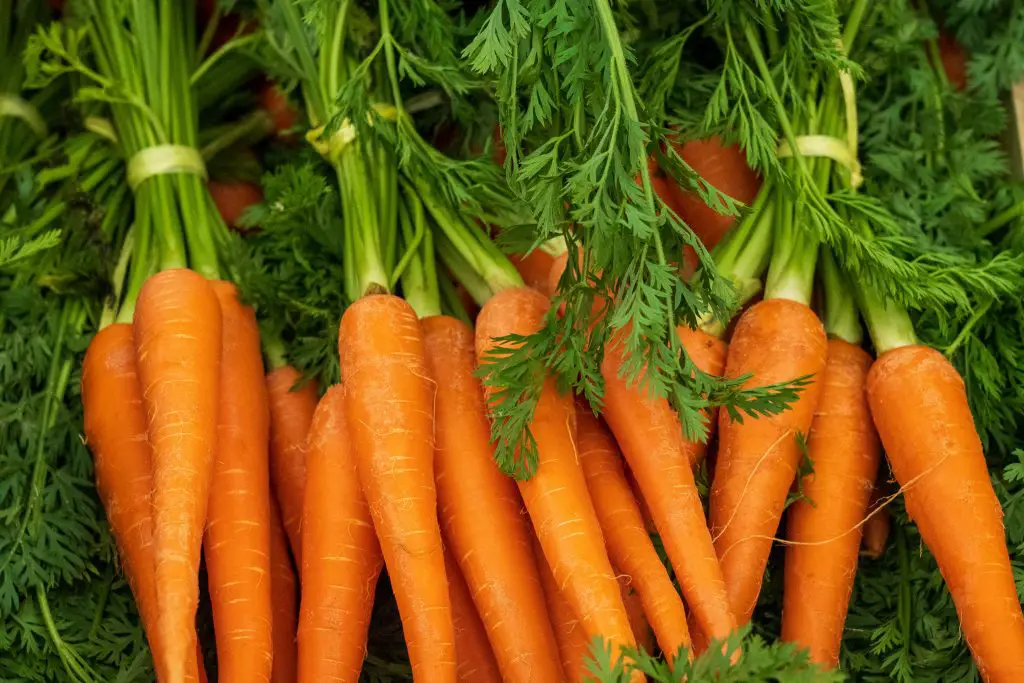Are Green Carrots Safe To Eat? What can I Do To Stop Them From Turning Green? Carrots are one of the most popular vegetables to grow in the garden at home. They can produce masses of roots that can be stored for months making them an extremely valuable crop to grow in your garden. However, have you ever noticed that sometimes the top of your carrot has gone green? Is there a problem? Or is there something I can do about it?
Green carrots are safe to eat however it is a good idea to remove that portion of the root that is green leaving the remaining orange carrot. The reason why the carrot has turned green is that the root has been exposed the light resulting in the production of chlorophyll which is green in color creating the discoloration of the root.
How Can I Stop My Carrots Turning Green
To prevent carrots from developing a green top there are a couple of simple steps that can be undertaken that will reduce the chances of this happening. The first obvious thing to do is to cover the carrot up with either soil or mulch which will prevent light from hitting the carrot and reduce the chances of you having problems.
However, it is important to ensure that the top growth of the carrot is not covered it is advisable to periodically mound the soil up around the top of the carrots creating a small ridge that protects the top of the carrot while not interfering with the top grow which will impact the root development.
The reason for this is because the tuber that is created below the ground is fed by the photosynthesis production of the top growth covering the top grow will affect the development of the root.
How To Get The Most Out Of Your Carrot Patch?
To get the most out of the area that you allocate for carrots there is a few things that can be done. The first and most obvious is to ensure that the carrot that is planted actually comes up. Carrots are known to be relatively hard to germinate at certain times of the year. The reason for this is that they are sown at a relatively shallow depth and require moisture for an extended period of time in order to germinate.
This means that it is not uncommon for the germination of the carrots to be extremely variable particularly in hot weather where the surface of the soil can dry out extremely quickly. To overcome this method there are a few things that can be done.
The first and most obvious step is to try and plant carrot seeds at a period of the year when the weather is not too hot and it is easier to maintain damp soil. The second option that will certainly increase the rate of germination is to presoak and germinate the seed in a container prior to planting.
This can either be done by soaking the seeds for a couple of hours before planting them or if you want to be absolutely certain that the germination occurs is to leave the seeds in a container with a damp paper towel to germinate for a couple of days. Additionally, it is also advisable to pre-soak the soil before placing the seeds into the garden. To read more about this click here.
Another technique that I use regularly which is generally not recommended by many gardeners is to sow the seeds into a tray in narrow rows that are approximately 2 to 3 inches apart. The seed trays are then partially submerged in the water to ensure that the soil is completely damn until the seeds germinate.

At this stage, the plants can be transplanted into the garden. To make this a simple and easy process I use a garden trowel to lift up the entire row of the seedlings and place them directly into a furrow in the garden reducing the level of transplant shock and general disturbance.
The disadvantage of doing this type of thing is that in some cases it will affect the shape of the current because the taproots can be disturbed which can result in carrots with distorted tubers. This effect can be reduced by selecting shorter carrots that have a shorter taproots.
Once the carrots are established there are things that you can do to maximize the harvest of the plants which include strategically thinning out the crop as the carrots get larger producing a crop of baby carrots followed by a crop of adult carrots.
This occurs because the removal of the smaller carrot results in there being additional space and nutrients for the remaining carrot plants to develop.
The other factor that can affect the overall yield of your garden is the choice of companion planting that you choose. It is possible to plant carrots between things like tomato plants and get a harvest from both plants simultaneously. Every year I always plant either carrots or beetroot in between my rows of tomatoes because they do not interfere with the tomato plants and allow me to draw two crops from one location.
In addition to planting tomatoes with carrots, there are also a number of other companion plants that could be grown with them. These include things like brassicas, lettuce, peas, and beans and also a range of different herbs such as rosemary, sage, and chives.

Some of these plants are complementary simply because of their growth habit which does not turned interfere with the carrots while others actually provide a distinct benefit. Plants such as peas and beans provide additional nitrogen to the soil aiding in the growth of carrots while other more fragrant plants such as the herbs provide protection from carrot fly because they mask the odor of the carrots.
For those of you who have not experienced carrot fly, it tends to occur after the initial harvest of carrots is taken when the fly I can smell the carrot. While the herbs will mask the smell it may also be worthwhile erecting netting that is around 2 ft high around the patch because carrot fly is known to fly at low levels so it is not necessary to completely cover the plants this will be sufficient to keep the flies out
I hope you found this article useful and have great success with your carrots throughout the season. If you have any questions or comments please leave them in the section below
Relevant Articles
Tricks To Planting Carrot Seeds That Really Work
How Many Carrots Grow From One Seed?
10 Ways To Make Your Vegetable Garden Look Beautiful

